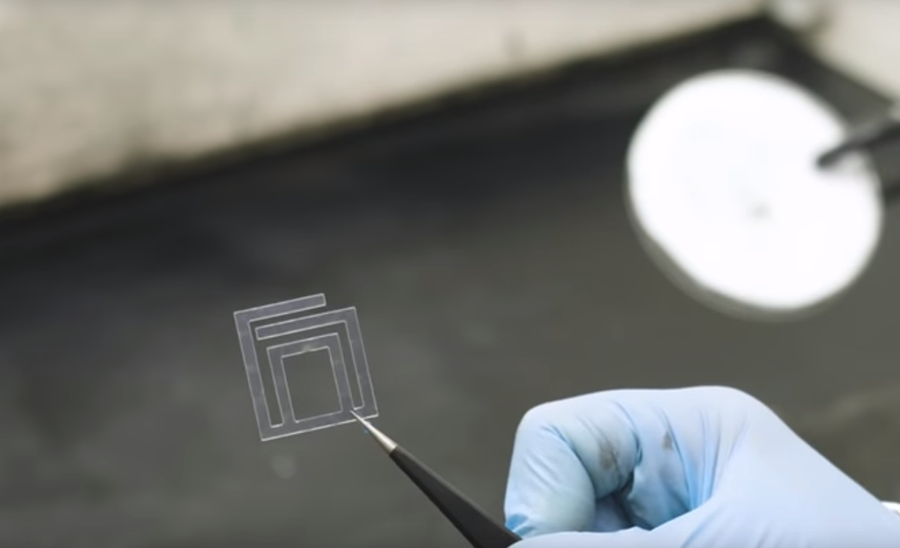In the near future, you may need to spray an antenna on your clothes for your mobile phone. Researchers at Drexel University’s College of Engineering in Philadelphia have developed a new spray-on antenna, which can be applied as easily as spray paint or bug spray.
In research published in the journal Science Advances, the scientists describe the antennas as very thin and referred to them as being “two-dimensional,” because they’re made from metallic material called MXene. However, they perform as well as the mobile antennas used in smartphones and wireless routers. If commercialized, the antennas could prove to be a game-changer in the growing field of smart devices, enabling those to collect and transmit data in ways that are impossible today.
“These antennas are made of a novel two-dimensional material called MXenes that was first discovered at Drexel University in 2011,” Yury Gogotsi, director of Drexel Nanomaterials Institute and Professor of Materials Science and Engineering, told Digital Trends. “MXenes are 1-nanometer thick sheets of metal carbides. [A single] nanometer is about 100,000 times thinner than a sheet of paper. Titanium carbide 2D sheets are metallic conductive, and keep their conductivity even when the sheets are stacked over each other during fabrication, making it possible to fabricate transparent, flexible, and wearable antennas.”
The search for a wearable antenna is not new. More than 10 years ago, a research paper described a glove and bracelet that detected when users interact with unobtrusively tagged objects.

“The ability to spray an antenna on a flexible substrate or make it optically transparent means that we could have a lot of new places to set up networks,” says co-author Kapil Dandekar, who directs the Drexel Wireless Systems Lab.
“There are new applications and new ways of collecting data that we can’t even imagine at the moment.”
Read more Conformal 3D-Shaped Coatings Could Be a Game-Changer in Conductive Ink Business
To make the antenna, all it takes is a few dashes of a water-soluble titanium carbide powder called MXene that was invented at Drexel. Next mix it with a little water, and Walla! Antenna’s ready. The spray-on antenna work because of the MXene’s unique ability to transmit radio waves when applied as a very thin, even invisible coating. MXene Antennas function just like the big metal ones in phones and mobile devices, but they take up virtually no space and can turn any object into a fully functional transmitter with just a few sprays.
The MXene antennas were found to be 50 times more efficient than the ones constructed from graphene and 300 times better than the ones made from silver ink, in terms of preserving the quality of radio wave transmission.
“The MXene antenna not only outperformed the macro and micro world of metal antennas, we went beyond the performance of available nanomaterial antennas, while keeping the antenna thickness very low,” says Babak Anasori, Research Assistant Professor at Drexel.
The spray-on MXenes tech is still in its early stages, but Anasori believes it will only get better over time.












